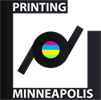Product Detail
Catalogs
Description
People are visual creatures who fixate on the things they like at first sight. That is why captivating catalogs with organized navigation can be a strong marketing tool. You can list your goods and services with their price, description and comprehensive information to give your customers an informed overview. Since catalogs are like printed booklets, they are multi-page bound and have user-friendly interface, which adds to your advantage for marketing.
Printing Minneapolis can design you creative catalogs to provide comprehensive information about the range of products and services you provide elegantly. We offer supreme quality designing and printing services that incorporate glossy covers, durable cover stock, finest paper stock, matte finish and more to accommodate your requirements. Also we use the latest developments in printing tools and technology to give you the only best.
Moreover, we focus on quality and that is why we model catalogs that are lasting. You can choose your own design, size, finishing and color combination, and our skilled team will put in their dedication to give you a product that you can be proud of.
- Paper
- Color
- Coating
100# Gloss Text
You may be familiar with this type of stock from the covers of many popular magazines like People and Time.
This paper strikes a balance between thickness and foldability, while the glossy finish gives your text a professional appearance.
100# Uncoated Cover
You may be familiar with this type of stock from thick index cards, though the finish is much higher quality.
A very versatile stock, the uncoated finish is good when you don't want a slick and shiny look, while the firm 100# stock folds precisely.
100# White Linen Cover
You may be familiar with this type of stock from business cards or notecards with a subtle, woven, fabric-like finish.
This sturdy paper offers a unique non-glossy look enhanced with its subtle, woven linen finish.
100# Gloss Cover
You may be familiar with this type of stock from standard business cards.
Stiffer than 100# Gloss Text, this glossy finish cover stock offers sharp folds and a sturdy product for a very professional result.
80# Uncoated Smooth Text
You may be familiar with this type of stock from business stationary or typical letterhead.
This paper has a quality feel, folds easily, and is a good choice when you don't want a slick and shiny finish. Although typical business letterhead is a good example for the weight and feel of this stock, we do not recommend printing your letterhead on digital press.
70# White Linen Text
You may be familiar with this type of stock from business stationary or typical letterhead with a subtle, woven, fabric-like finish.
This thinner linen option offers a unique non-glossy look enhanced with its subtle, woven linen finish. Unlike linen finish letterhead stocks, this linen finish digital stock is not watermarked.
4/4
Full color on both sides of the sheet. This option can reproduce the range of colors you see in a typical photograph out of the standard 4 printing colors: cyan, magenta, yellow, and black. Typical examples of this are magazine covers and high-end catalogs.
4/1
Full color (cyan, magenta, yellow, and black as above) on the front and black on the back. A typical example of this is a flyer.
4/0
Full color (cyan, magenta, yellow, and black as above) on the front and no printing on the back. A typical example of this is a poster.
AQ 2 Sides
AQ is short for Aqueous Coating. This is a semi-gloss, environmentally friendly, water-based coating applied over the entire front and back of the printed piece. It provides additional gloss and protection, and it can be written on with a ballpoint pen.
Satin AQ 2 Sides
AQ is short for Aqueous Coating. This is a matte finish, environmentally friendly, water-based coating applied over the entire front and back of the printed piece. It reduces the gloss of the printing and it can be written on with a ballpoint pen.
UV 2 Sides
UV is short for Ultra Violet Light-Cured Coating. This is a high-gloss coating applied over the entire front and back of the printed piece. It is not recommended for products you need to write on after being printed.

